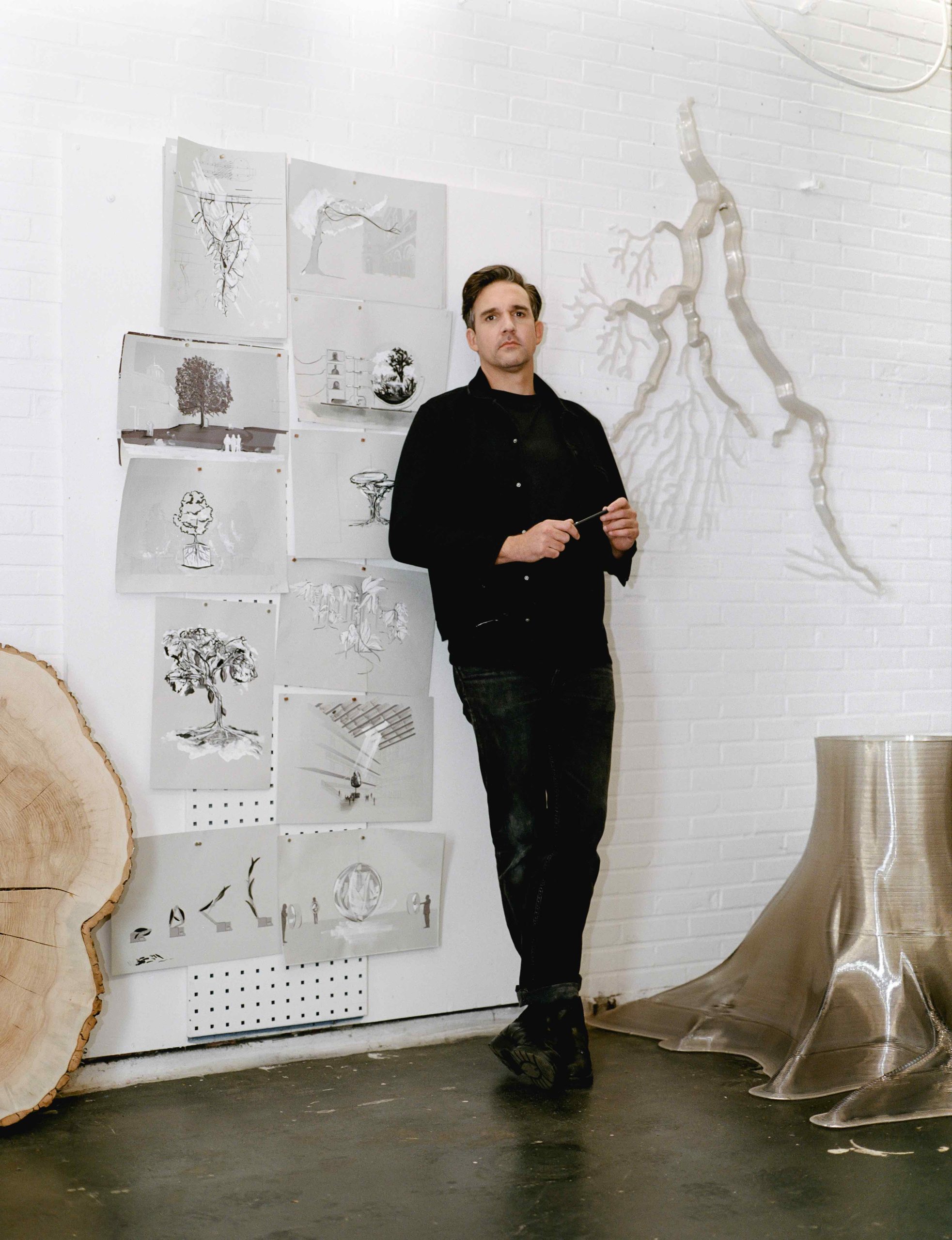There’s a line on the website of ecological artist, Thijs Biersteker, that reads: “If the research does not reach us, then how can the research teach us?” This, in a nutshell, summarises how Biersteker approaches the work he creates. The artist collaborates with scientists, and often with institutions like the National History Museum in London, UNESCO and Delft Technical University, to visually realise hard facts and figures that we should all really get to know. For Wither, Biersteker’s collaboration with UNESCO as part of the Dresden Biennale 2021, the artist worked with scientists at Indiana University Bloomington who were able to calculate the rate at which the rainforest is dwindling per second (641m2 – or just under 55.4 million m2 a day). In order to visualise this, Biersteker created an installation in which leaves light up and flicker – or wither – repeatedly to represent the continual loss of the rainforest. Visually, it’s a beautiful artwork to look at, even if what it represents is not.
But Biersteker does not always give his installations with such an aesthetically pleasing quality. In Pollutive Ends (2019), commissioned by Beijing Riverside Art Museum, the artist created an interactive installation which shows how quickly, and how much, a single cigarette butt pollutes water. The piece works by using algorithmic data to calculate the number of visitors in the museum at a given time, the likely number of smokers amongst them, and the quantity of pollution that would, therefore, be generated. It’s one of the more repulsive of Biersteker’s artworks to look at, but nonetheless captivating – not only in terms of how much pollution is created, but also in terms of how the artist conceptualises such installations. MB>CO2 (2022) uses a similar concept to demonstrate the physical impact of the digital carbon footprint. As part of the installation, the quantity of data used to carry out digital acts – a video call, watching a TV show, listening to music – is transformed into the equivalent amount of carbon dioxide which is then released into a tank containing plants. The installation is based out of Biersteker’s studio in the Netherlands, with users hoping to see the impact of their usage on the environment able to book time slots to test the artwork out.
If Biersteker’s work communicates an urgency, it is not hopeless. In Econario (2022), a collaboration with the National History Museum, a five metre robotic plant moves according to the data it is fed. Depending on how sustainable each scenario is, the robot will grow to a certain height – the maximum being five metres. In this way, Econario helps visualise the choices we make – collectively – in a way that feels more accessible than an infographic shared on social media (and MB data used!) might. It is also important to make mention of the Woven Studio, founded by Biersteker with studio director Sophie de Krom, in order to sustainably create the artworks that become the basis of his collaborations. A material passport is calculated, which charts the emissions as well as the recyclability of each work. These are small steps, but undoubtedly ones that the art world and beyond must take note of.
Though Biersteker’s work often takes a very technological approach, with a skillful mastery of reinterpreting machine-fed data, the artist also has a way of leveraging data to lend nature a voice. This is quite literally the intention behind Voice of Nature (2018), a collaboration with Delft Technical University, in which sensors are used to visualise how a tree might feel in realtime. It might sound speculative, but that could hardly be less true. Each year, as trees add another ring to their trunk, they record changes and processes over time – such as disease, pollution, fire and drought. In Voice of Nature, this annual record becomes a record in real time. By connecting sensors to the roots, leaves and branches of a tree, an algorithm was used to create a digital ring each second using data such as CO2 levels, temperature, and so on. It’s a concept taken further by Biersteker in 2020 with Econtinuum, a collaboration with botanist and neurobiologist Stefano Mancuso. For the installation, two large-scale root structures created out of recycled plastics were used to represent a conversation between two trees. Again, speculative or grounded in reality? Informed by research into plant communications, the installation uses Eco AI to recreate the ways in which tree root systems are used to share nutrients along a fungal network.
Through collaborative projects such as Econtinuum, Biersteker demonstrates how we can benefit from collective action. Practically, this means creative and visual interpretations of data and science that might provoke action. Emotionally, it might mean making us a little more thoughtful and careful of our surroundings. Trees, after all, only have a certain number of rings.
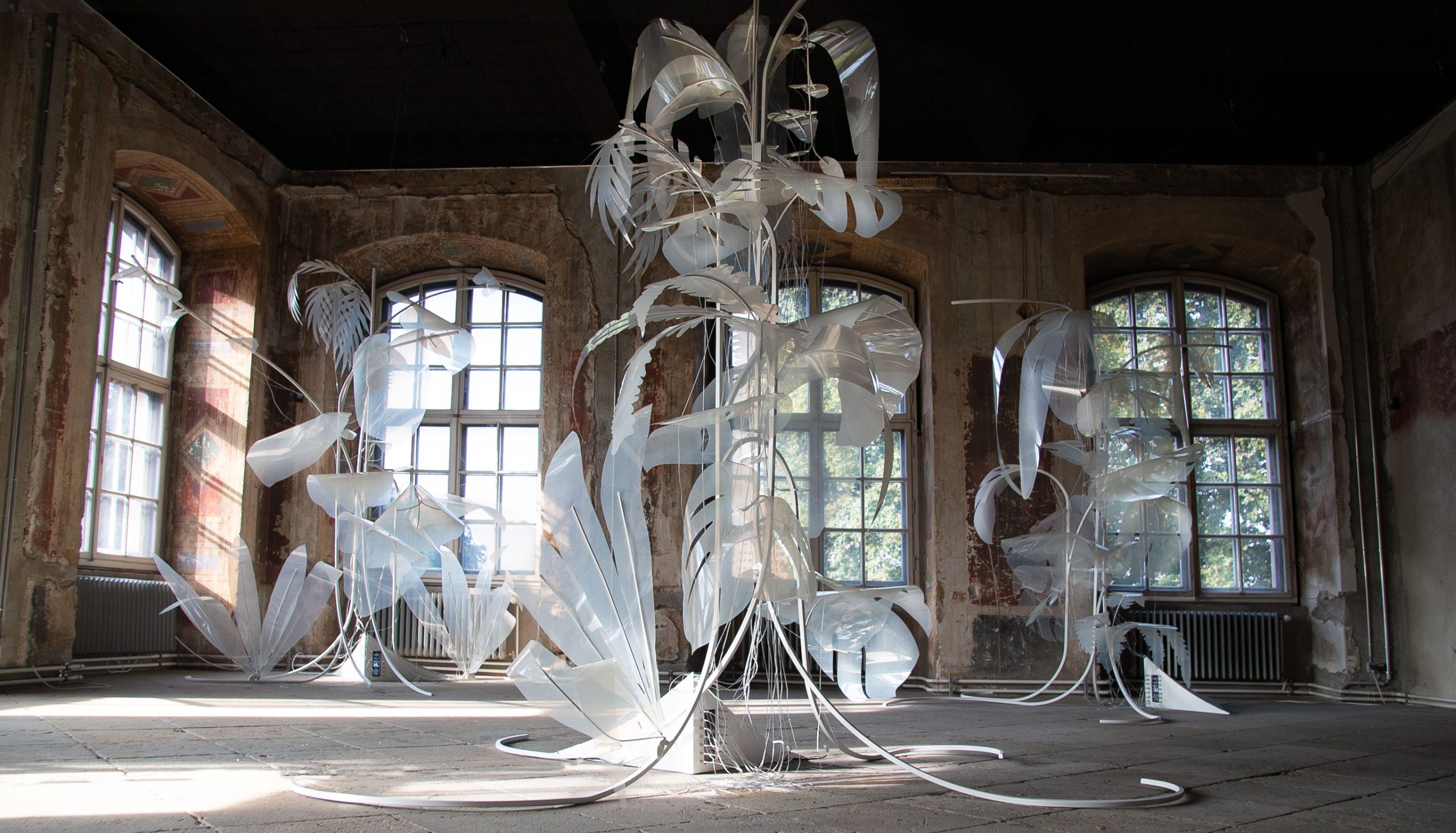
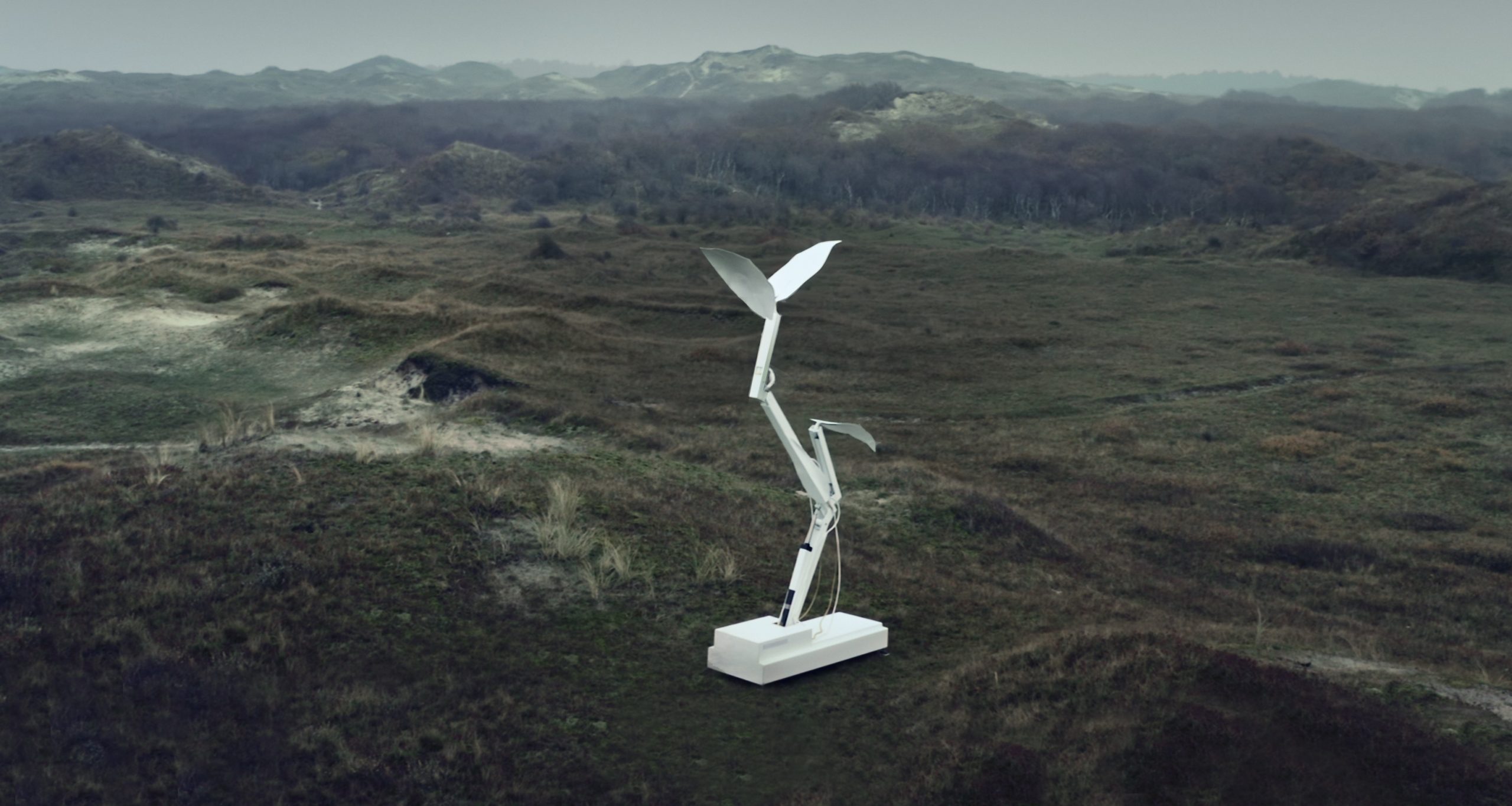
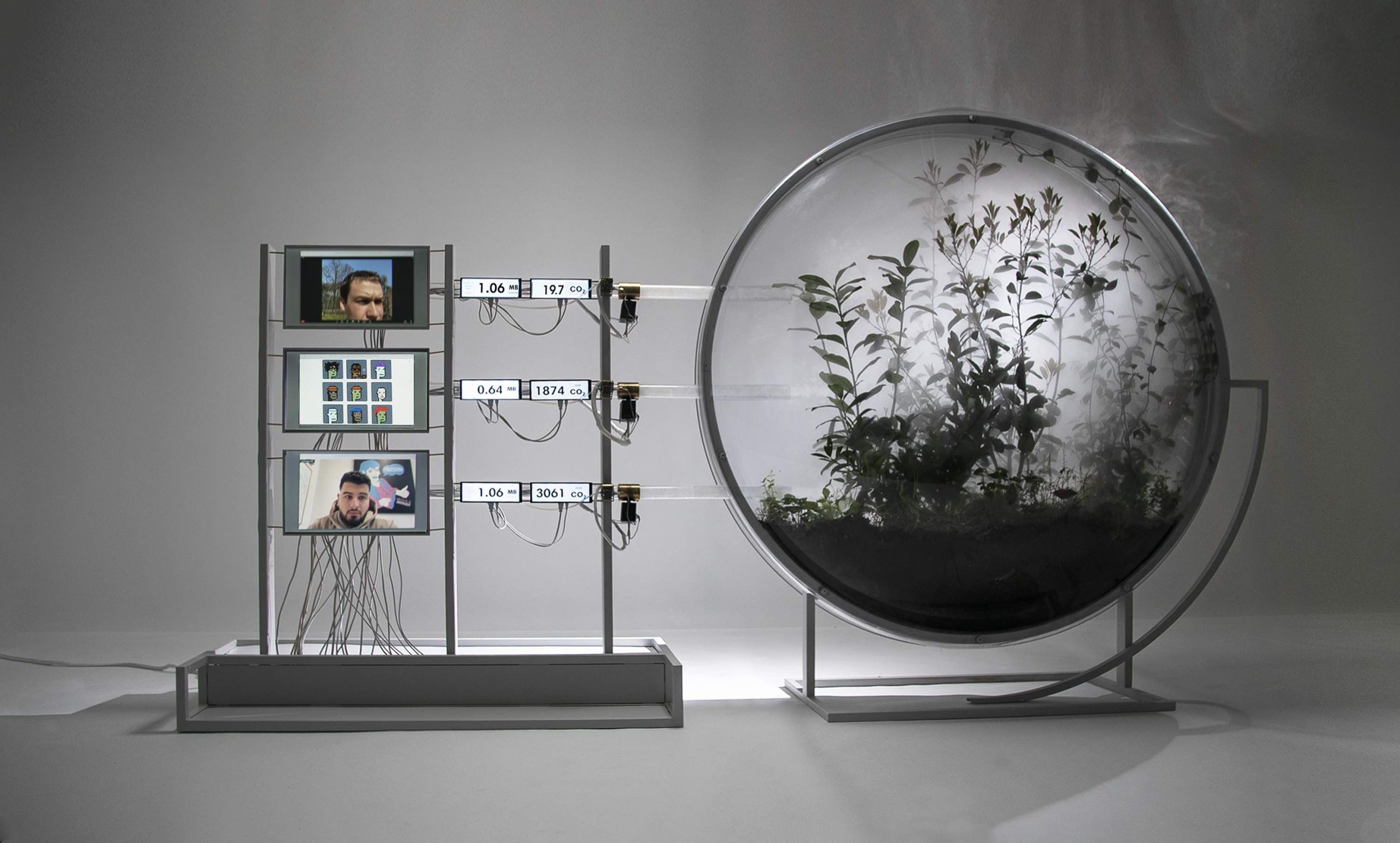
Art has always communicated the topics of the time, from hunting instructions to religion. It has always been a collaboration between knowledge and expression. In my work I reflect on the most important topic of our time: the climate crisis. The data and knowledge has been there for too long without art helping it to resonate in culture. It takes the combination of facts and feelings to provoke action; up until now, we have heard too many facts.
I look for the most urgent topics of today and aim to make them accessible, relatable and understandable through my data-driven art installations. From UNESCO to the European Space Agency (ESA), the scientists come to our studio and we start with a conversation.
I read about the topic for weeks before they arrive and then we can have an in-depth chat. It’s best when I get an email from a professor asking for my help to bring their facts to the world, such an honour. When working with them and their data I look for the things that make me shout out “WHY THE **** DON’T I KNOW THIS?” Most of the time that comes from having a conversation with one of the climate scientists we collaborate with. Some of their data is so overwhelming and their impact so confronting that it becomes unimaginable. I think we are not only in a climate crisis but also in an imagination crisis. I also think that’s the part that can be solved by art.
I think data as art is messy and you can see it in many ways. When I dive into a topic, I spend days or weeks on making the core of my work as simple and bold as possible. I work until the science is solid and the shape of the work emphasises the message we need to communicate in its purest form. For me, my work needs to be aesthetically pleasing and inviting but also boldly clear in its message.
Art reflects the time where we are in. If you are not working on one of the urgent topics in this crucial tipping point time, then why are you an artist? We as artists have a gift to make the complex compelling and we should use that gift to turn the tide. Facts alone have not done a good job. People are numb to numbers and getting headaches from headlines. I aim to make you a part of the work through interaction and reflection; I believe it makes things personal, and when things become personal people start acting on it.
Interesting question. I feel white has a neutrality that my work has not. It makes the works approachable while their messages about pollution, and deforestation are not. It’s my mission to make hard, confronting data accessible, a natural colour builds a neutral ground to experience the work in.
Interesting questions no2! I see technique just as paint. Whatever technique helps me communicate the message the best is the one I will work with.
These two works are generative artworks, meaning they harvest data from nature in real time and I use that to generate the artwork at that moment. This way it becomes unique, every millisecond, and as it adapts, it will feel alive. Using sensors and real-time visualisations helps us understand the liveliness of our surrounding world and grow more empathy and respect for its beautiful complexity. I love the way work lives and involves us even when we are not there.
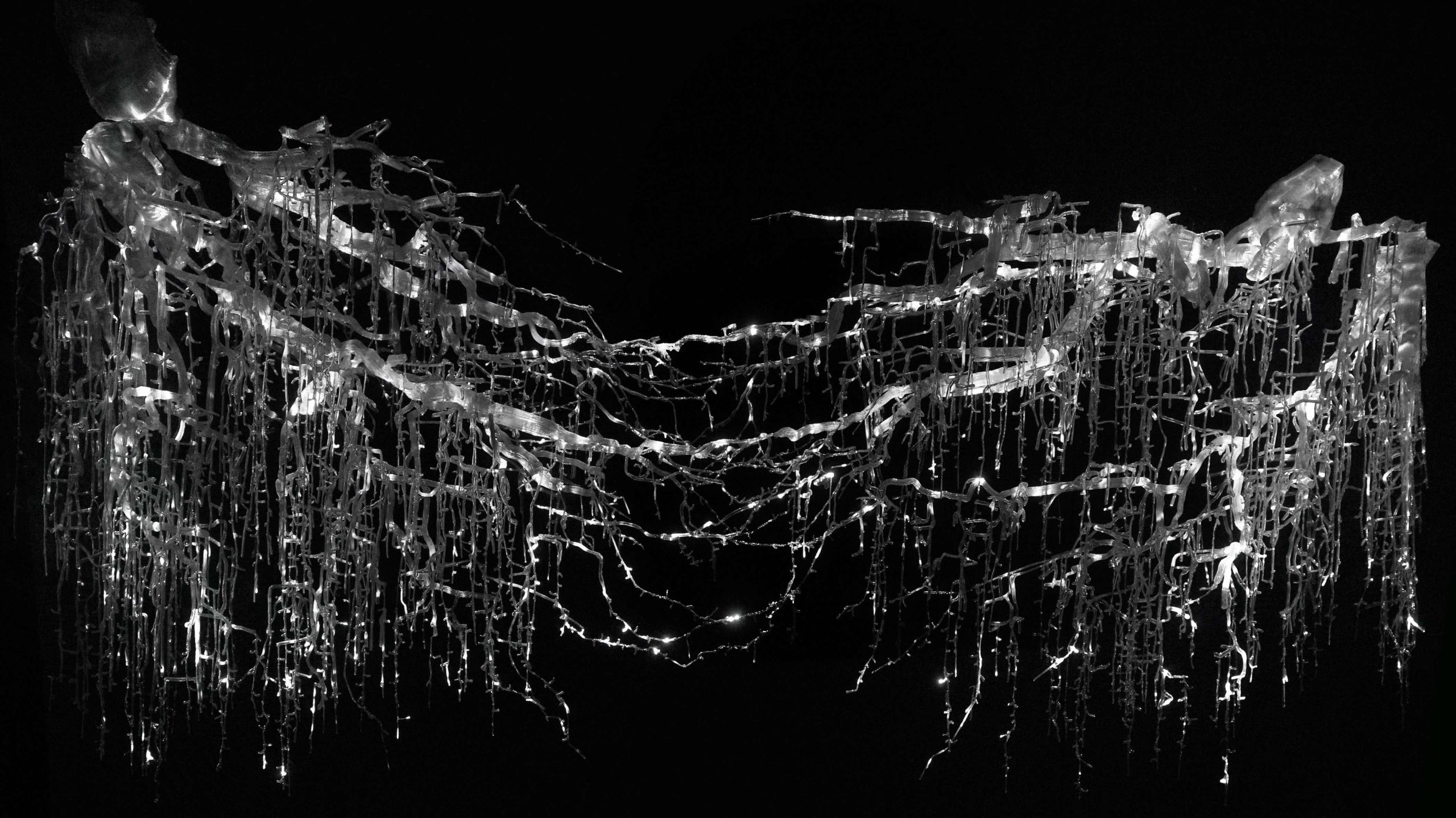
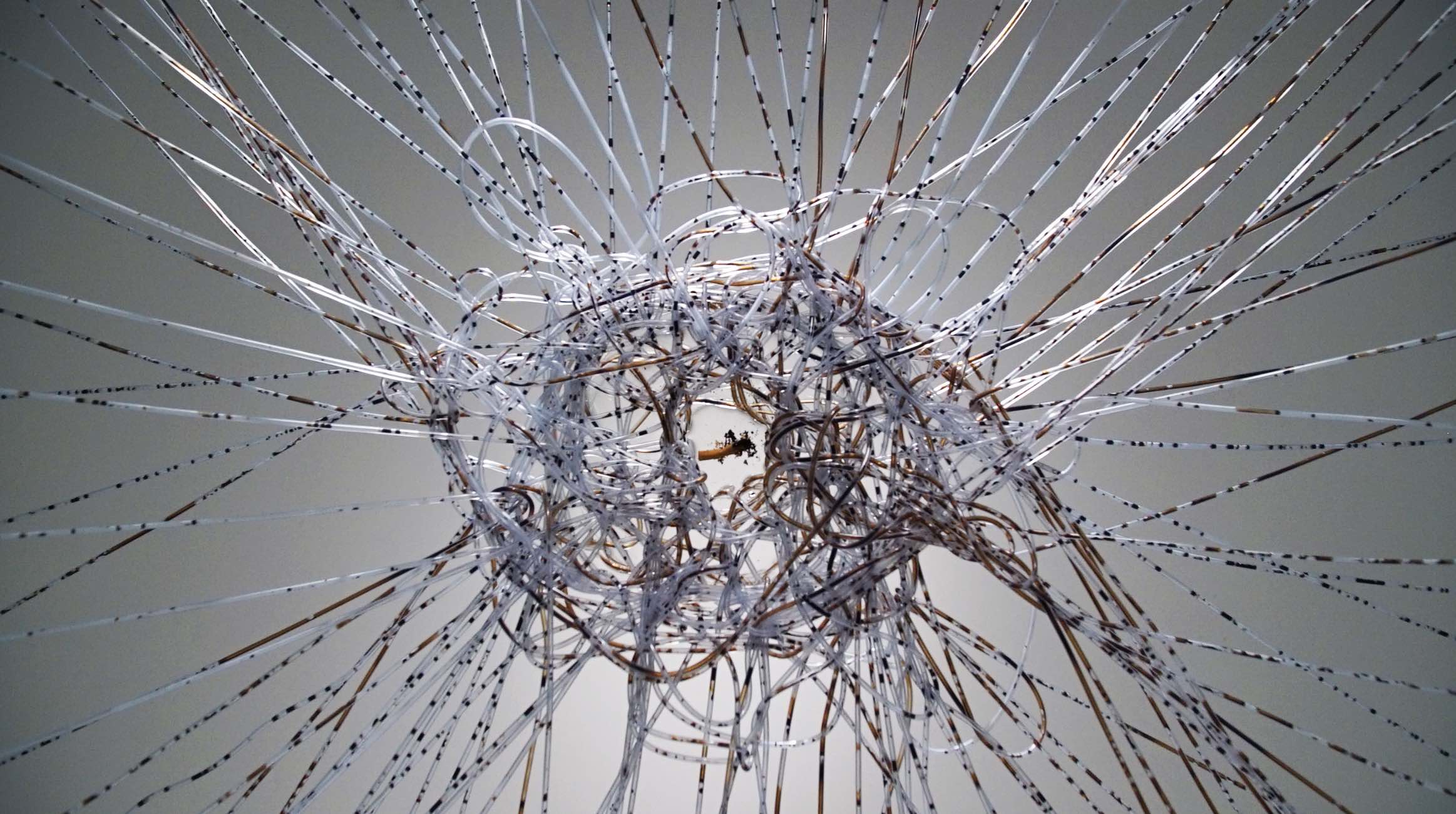
Everyone should share my work, that is how system change works. Research shows that we as individuals make the most impact if we share our opinions. You make an impact by eating vegetarian, but you make more impact by sharing the reason why you do it with others.
I think confronted works like this are needed to provoke a simple action: stop streaming so much; stop plastic, and don’t throw your cigarette butts on the ground. The solutions are there, I only need to make people aware.
The art world is just like the rest of the corporate world talking a lot about this topic. But change is not moving fast enough. At Woven, we are working on this. Based on years of experience working in the circular economy, the team and I have built an enormous knowledge of how to produce sustainable and hi-end. We are now working on an artist framework for material passports that we want to open source by mid-2023. We as an art community can bring inspiration for a better world. If we do that through our art, then that’s great. If we back that up with our material choices, then that makes it doubly great.
